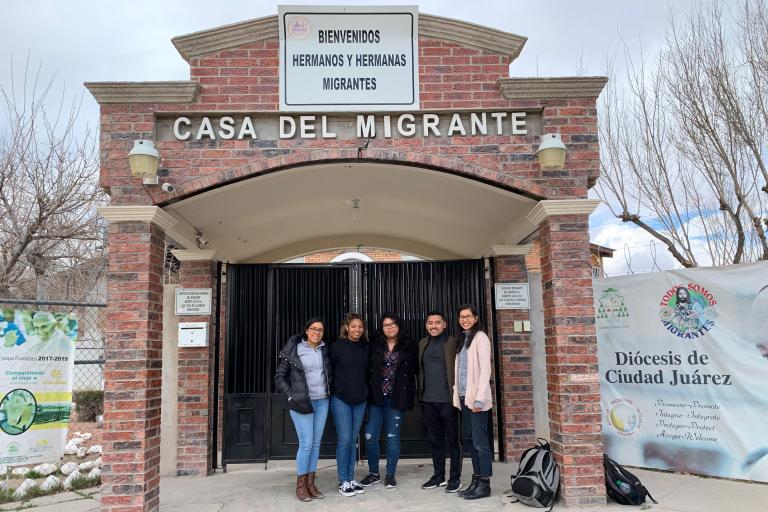Student POV: Observations on the Plight of Asylum Seekers in Juárez, Mexico
Accompanied by Elora Mukherjee, director of Columbia Law School’s Immigrants’ Rights Clinic, four students spent a week counseling refugees stranded in shelters.
January marked the one-year anniversary of the Migrant Protection Protocols, a policy also known as Remain in Mexico, which requires asylum seekers to wait in Mexico while their cases are processed in the United States. That same month, a team of students from Columbia Law’s Immigrants’ Rights Clinic began to provide pro bono legal services to asylum seekers and refugees stranded in shelters across the city of Juárez.
“The Migrant Protection Protocols are effectively eradicating migrants’ due process rights. [Migrants] are being forced to fend for themselves in an unjust and broken system,” says Nestor Almeida ’20, one of the students who traveled to Juárez. “While there are an estimated 20,000 asylum seekers in Juárez, hardly any lawyers are willing to cross the border to meet those living in shelters, offer free legal services, or provide legal representation,” says Elora Mukherjee, the Jerome L. Greene Clinical Professor of Law and director of the clinic.
The clinic is trying to change that. Since 2014, Mukherjee and her students have successfully represented hundreds of asylum seekers who have fled violence and persecution in their home countries. They have advocated on behalf of mothers and children held at the nation’s largest family detention center in Dilley, Texas, and in January 2019 they traveled to Tijuana to offer pro bono legal services.
The trip to Juárez built on the clinic’s work on both sides of the border. Partnering with the Catholic Legal Immigration Network’s Estamos Unidos Asylum Project—a nonprofit serving vulnerable refugees, asylum seekers, and migrants—the students counseled asylum seekers on U.S. immigration law and helped them complete applications and draft affidavits necessary to support their cases.
It was an eye-opening experience for the students, who saw firsthand how the policy affected asylum seekers. “The danger these individuals face as a vulnerable population in a foreign country is constant and paralyzing,” says Magdalena Oropeza ’21. The asylum seekers often are forced to return to dangerous areas of Mexico, putting their safety in jeopardy and all but eliminating their access to legal counsel. “One woman told me that she would rather return and die in her home country than die in Mexico while waiting to see if the United States will grant her the relief that she needs,” says Oropeza.
In a recent op-ed in the Los Angeles Times, “Here’s what happens to the asylum seekers we turn away,” Mukherjee notes that “the process of seeking asylum when someone is in the United States is hard enough. Requiring asylum seekers to remain in Mexico makes navigating the process almost impossible.” And, she adds, that’s the point—to make nearly everyone lose their cases, to close off the southern border, and to end asylum.
As for beating the odds? “It was heartbreaking meeting asylum seekers with legitimate claims and knowing that Remain in Mexico’s intentional barriers will try to prevent them from winning their case,” says Brenda Gonzalez Rueda ’21.
Genesis Sanchez Tavarez ’20 summed up the situation: “Imagine making it to your destination, the U.S. border, begging for help, only to be sent back to the place you desperately ran away from. That’s the fate of most migrants seeking asylum in the United States.”
